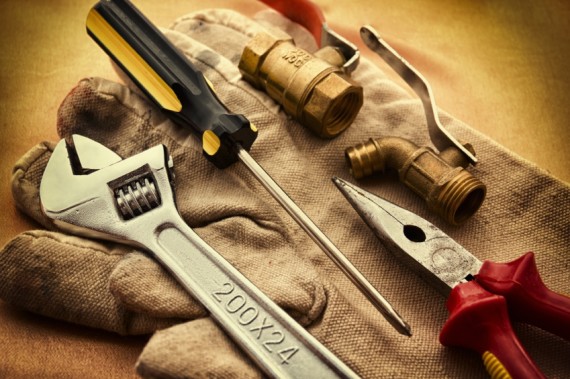What Is A Low Maintenance Team?
There are High Maintenance People and there are Low Maintenance People. The High Maintenance People wear me out. I like Low Maintenance People!
I believe you can have teams that are High Maintenance and teams that are Low Maintenance. I have led both types of teams. Again, I like Low Maintenance Teams!
What does a Low Maintenance Team look like? Why is a Low Maintenance Team the best team to lead?
The What- A Low Maintenance Team (LMT)
The British statesman Basil Walsh said, “If you don’t know where you are going, how do you expect to get there.”
If our goal is to build a Low Maintenance Team we must know what one looks like.
A Low Maintenance Team is an organization that is characterized by:
- Minimal oversight from its leaders.
- Positive and fulfilled team members.
- Initiative at even the lowest levels.
- High levels of accountability and responsibility.
- Healthy relationships among peers.
- Consistently high results.
- Others hold it up as an example of what good looks like.
The Why- Benefits Of A Low Maintenance Team
Building a Low Maintenance Team is not a quick fix process. It takes a leader who is dedicated to change. The status quo is a hard thing to beat. The status quo has it’s own inertia. “A body at rest tends to stay at rest.”
I found some of the toughest things to overcome were my own ego, company traditions, my previous experiences and the tyranny of the urgent. They all worked against me during the change process.
But the other side to inertia is “A body in motion tends to stay in motion.” The key to is to get started.
First, I must believe that I can be a better leader and have a better team. Second, I must see the benefits breaking the status quo will bring in the end. What is life like as part of a Low Maintenance Team?
The Benefits To The Leader of a LMT
Human nature asks, “What’s in it for me? If I am the one who needs to break out of the comfort of the status quo, I want to get something out of it.”
When I look back at my favorite teams, they were all Low Maintenance Teams. I have asked leaders through my research to describe what life was like for them when they were leading their own Low Maintenance Teams. Their responses lined up perfectly with my own experiences.
- The leader is able to focus on big picture strategic needs because they are not caught up in the weeds of solving the everyday problems of their people.
- The leader exercises proactive leadership versus reactive management.
- The leader never feels as if he is baby-sitting adults.
- The leader spends less time on monitoring and more time coaching.
- The leader feels as if he is truly having an impact on his people.
- The leader has fun at his job and has good relationships with his people.
- The leader has higher engagement and job satisfaction.
- The leader spends less time working but is more productive.
- The leader has a better home life.
The Benefits To The Led on a LMT
If changing the status quo was only good for the leader it would be a purely selfish act. But being part of a Low Maintenance Team has incredible benefits to the people for whom the leader is responsible.
When the leader decides to make an all out assault on the status quo, the led may balk at the changes. Some will not be willing to be part of the changes. That is when the leader will need to exercise courage and find someone new.
Others will be slow to change. That is okay. Even some of the best, may have become comfortable in their pain. The rest will have been praying and waiting for things to get better. Whatever the case may be, the ones that stay will realize the following benefits.
- The led feel that they have autonomy.
- The led believe they are growing professionally and personally.
- The led are passionate about their jobs.
- The led believe their leader trusts them to do the right thing.
- The led believe in the purpose of their job.
- The led believe in their teammates.
- The led believe they are on a special team and don’t want to leave.
The Benefits To The Organization that includes LMT’s
The third winner when a leader builds a Low Maintenance Team is the larger organization. Creating a LMT can be done in most organization’s no matter the history, culture or quality of leadership at higher levels.
Some frontline leaders may believe the negative inertia of the larger organization would prevent them from being successful in implementing the changes needed to build a Low Maintenance Team at their level. But I have done it despite the bureaucracy and politics.
It would be best if everyone embraced the LMT principles. But if not, the larger organization will still see benefits coming from your team as will your peers. As more of your peers adopt these strategies, the impact on larger organization will grow. The benefits will become more evident to those above you.
- The organization has lower turnover.
- The organization has higher productivity.
- The organization has a deep leadership bench strength.
- The organization has fewer integrity or HR issues.
- The organization develops a reputation as the place to be.
- The organization becomes more attractive to outside talent.
The Bottom Line:
A Low Maintenance Team is not easy to build. It takes focus and determination from the leader. It is a culture the leader must take control of in order to create, change or maintain it.
Some leaders feel more comfortable being the center of the team and having everything run through them. See: Leaders: Get Out Of The Way!
But if you are like me, you would prefer to build a team that can operate without your presence. My dad used to say to me, “The mark of a real leader is what happens when he is not around.”
I want to be leading a team that allows me to focus on the big stuff that only I can do, while taking care of everything else without me.
Question:
What type of team are you leading? What type of team are you on?


Please add your comments now.